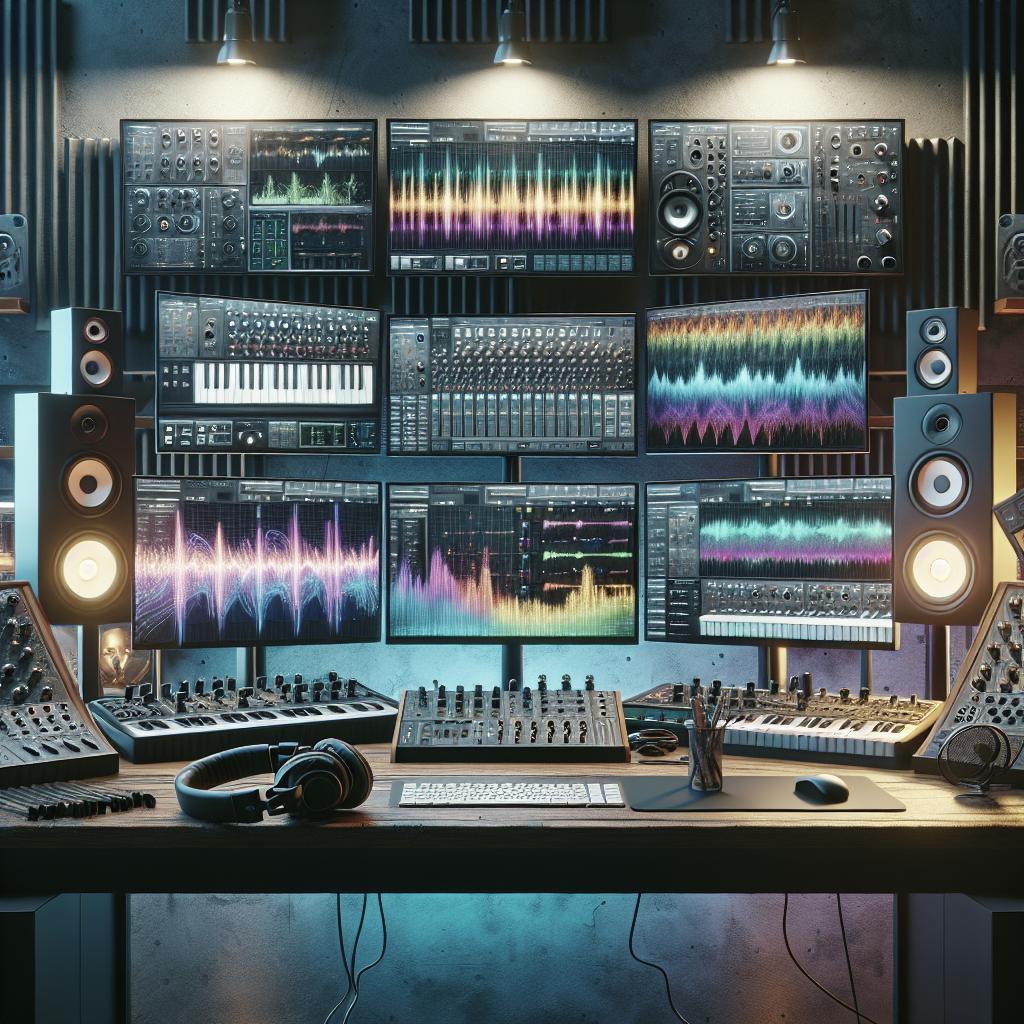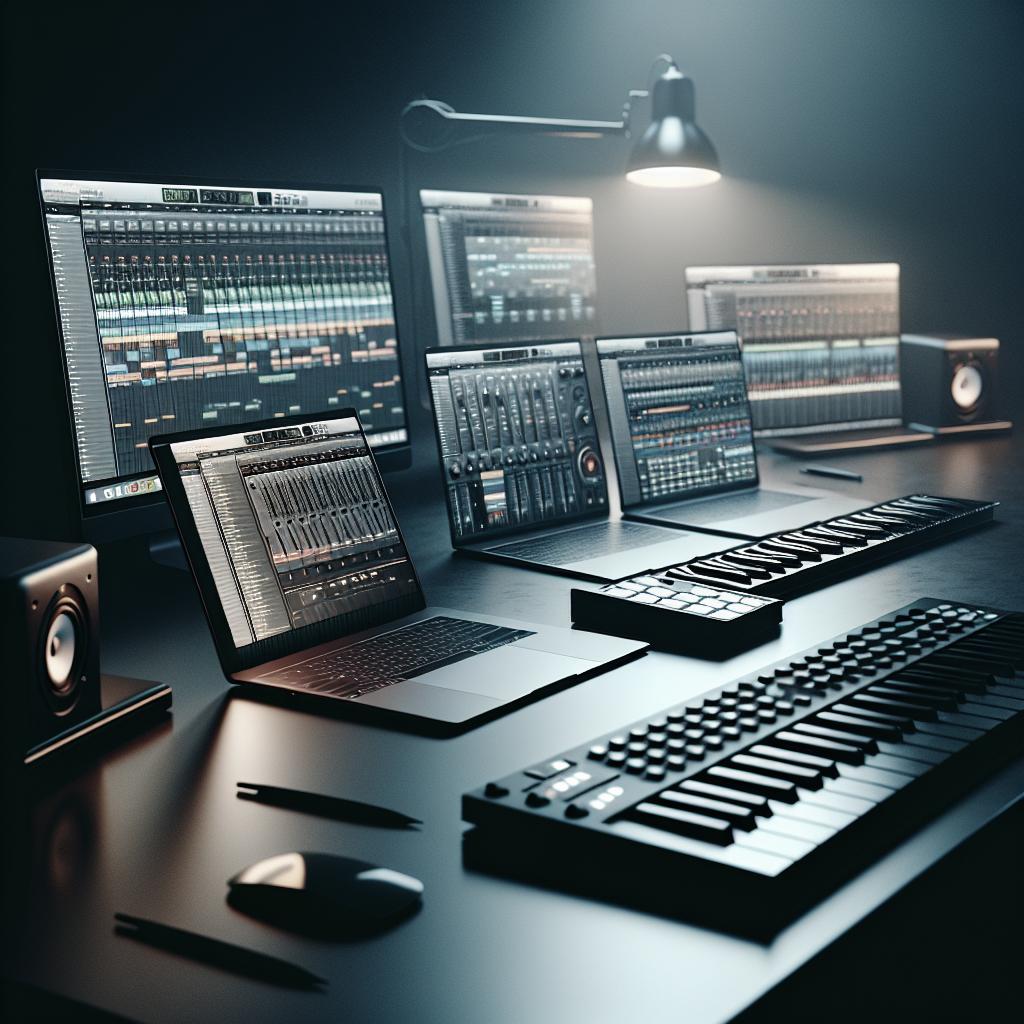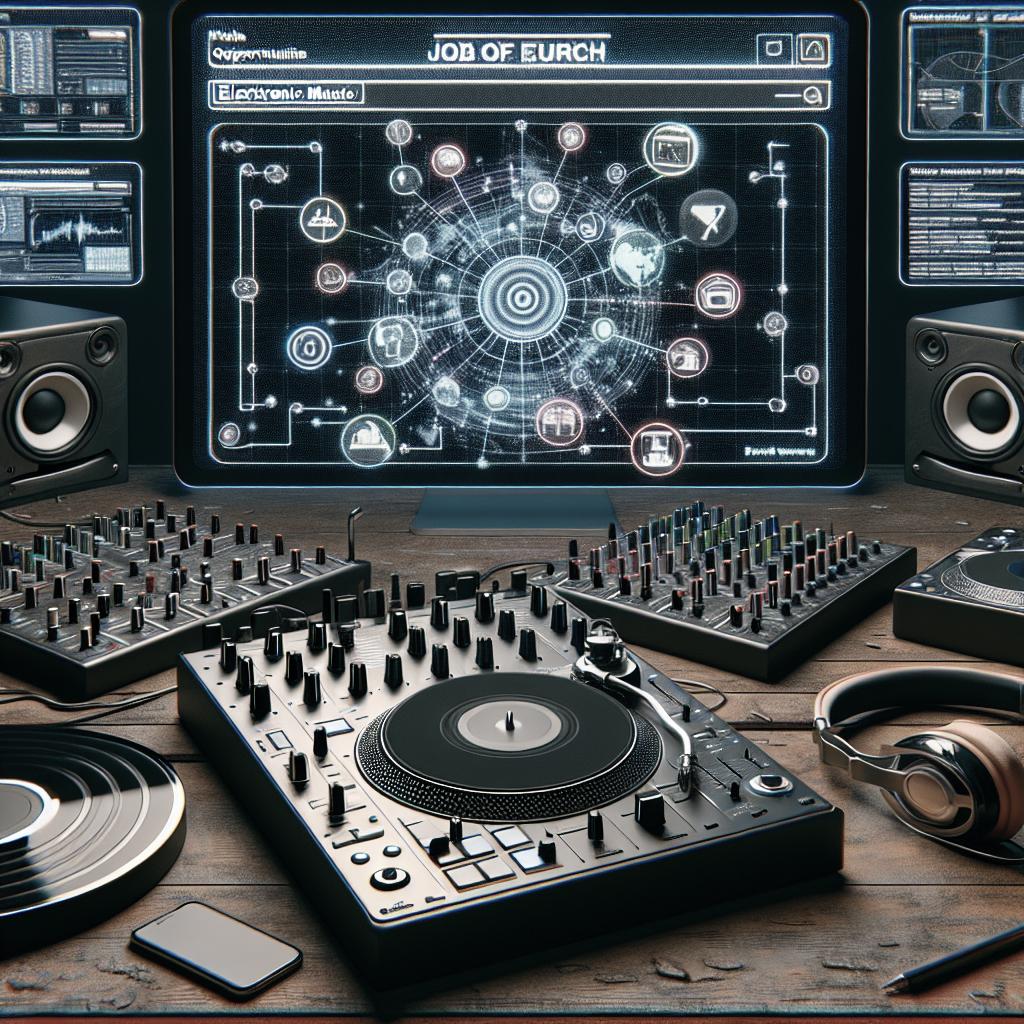<>
Choosing the best monitor for your electronic music studio is crucial for ensuring accurate sound reproduction and optimal production quality. Whether you are a beginner setting up your first home studio, a seasoned professional, or someone working on a tight budget, the right monitor can make a significant difference. In this blog post, we will walk you through the best monitors available in different categories ranging from budget options to high-end professional choices. We’ll cover their specifications, ideal use cases, and how they stack up against each other. Furthermore, we’ll provide insights on buying tips, setup advice, and answers to common questions regarding studio monitors to help you make an informed decision.
The quick list
Here’s a quick overview of the best monitors for electronic music studios: 1. M-Audio BX4 – Best Budget 2. Adam Audio T5V – Best under $500 3. KRK Rokit RP7 G4 – Best for Home Studio 4. Yamaha HS5 – Best for Mixing 5. IK Multimedia iLoud MTM – Best Compact 6. JBL 305P MkII – Best for Beginners 7. Focal Shape 65 – Best High-End 8. Focal ST6 Twin6 – Best Professional 9. Kali Audio LP-6 – Best for Guitar
Best budget
1. M-Audio BX4
The M-Audio BX4 is an excellent choice for those on a tight budget. Despite its affordable price, it packs a punch with its impressive audio performance. This pair of monitors features 4.5-inch low-frequency drivers and 1-inch silk dome tweeters, which can handle a variety of frequencies well. Ideal for small home studios, the M-Audio BX4 provides clean and well-balanced sound, making it suitable for beginners or those looking to expand their setup without breaking the bank. Connectivity options are plentiful, including 1/4-inch, 1/8-inch, and RCA inputs, allowing you to easily hook up various devices.
Best under $500
2. Adam Audio T5V
If you can stretch your budget to under $500, the Adam Audio T5V is an excellent option. This model is known for its exceptional audio clarity and detail, thanks to its U-ART Accelerated Ribbon Tweeter and 5-inch polypropylene woofer. These features make it a favorite among music producers who need precise sound for mixing and mastering. The T5V offers a wide frequency range and impressive maximum SPL, making it versatile for electronic music production. It also includes rear-firing bass reflex ports and high/low shelf EQs, providing flexibility for various room environments.
Best for home studio
3. KRK Rokit RP7 G4
For home studio setups, the KRK Rokit RP7 G4 is a standout. Known for its trademark yellow cone, the Rokit series has been a reliable choice for many artists. The RP7 G4 features a 7-inch Kevlar® Aramid Fiber woofer and a 1-inch Kevlar® Aramid Fiber tweeter, delivering clear highs and punchy lows. It comes with a built-in DSP-driven Room Tuning with 25 graphic EQ settings, allowing you to tailor the sound to your room. The front-firing port ensures effective bass response, making it suitable for smaller spaces where placement flexibility is key.
Best for mixing
4. Yamaha HS5
Yamaha’s HS5 monitors have long been lauded for their accuracy, making them the go-to choice for mixing. Equipped with a 5-inch cone woofer and a 1-inch dome tweeter, the HS5 provides an exceptionally flat response, ensuring your mixes translate well to other listening environments. These monitors also feature room control and high-trim response controls, allowing for precise adjustments based on your studio’s acoustics. With their signature white-cone design, they are not just functional but also aesthetically pleasing.
Best compact
5. IK Multimedia iLoud MTM
The IK Multimedia iLoud MTM Monitor is perfect for small home studios with limited space. Despite their compact size, these monitors deliver precise and powerful sound. The dual 3.5-inch mid-woofers and 1-inch tweeter provide a high level of clarity and detail. One standout feature is the MTM (mid-woofer, tweeter, mid-woofer) configuration, which minimizes ear fatigue and provides consistent sound across different environments. They also come with ARC room calibration, allowing for easy setup and optimal performance in any room.
Best for beginners
6. JBL 305P MkII
The JBL 305P MkII is a fantastic option for beginners. These monitors offer professional-grade performance with a 5-inch low-frequency transducer and a 1-inch neodymium tweeter. The patented Image Control Waveguide provides precise imaging and a broad sweet spot. For those new to studio monitoring, the 305P MkII’s combination of affordability and performance is ideal. They reproduce detailed highs and accurate lows, helping beginners make informed mixing decisions right from the start.
Best high-end
7. Focal Shape 65
The Focal Shape 65 is a high-end monitor that excels in sound accuracy and build quality. Featuring a 6.5-inch Flax sandwich cone woofer and a 1-inch aluminum/magnesium inverted dome tweeter, it delivers detailed and balanced sound across the frequency spectrum. These monitors are designed for professionals who demand the best in audio performance. The Shape 65 also includes passive radiators that optimize the bass response, making them ideal for critical listening and mixing tasks.
Best professional
8. Focal ST6 Twin6
For professionals, the Focal ST6 Twin6 stands out as one of the best choices. It’s engineered to provide the ultimate in sound fidelity with its dual 6.5-inch “W” composite sandwich cone woofers and a beryllium inverted dome tweeter. These features ensure an ultra-linear frequency response and wide dynamic range. The Twin6 is perfect for studios that require precise audio monitoring and are involved in high-end production and mastering. Its detailed and transparent sound will help professionals achieve top-tier mixes with ease.
Best for guitar
9. Kali Audio LP-6
Guitarists seeking a reliable monitor will find the Kali Audio LP-6 to be a great fit. It features a 6.5-inch woofer and a 1-inch soft dome tweeter, capable of delivering rich and accurate bass tones. The LP-6 offers an impressively flat response, making it ideal for capturing the nuances of guitar audio. With robust build quality and a budget-friendly price, the LP-6 provides guitarists with precise sound reproduction essential for studio work. Its boundary EQ settings allow it to adapt to different room acoustics easily.
Also tested
In addition to the top monitors listed, other models have been tested and proven to be reliable: – PreSonus Eris E5 : Great for budget-conscious users looking for decent quality. – Genelec 8010A : A compact, high-quality option for tight spaces. – Mackie CR3-X : Affordable and popular with beginners.
Buying advice
What do I need to know about studio monitors?
When purchasing studio monitors, consider factors such as frequency response, driver size, and build quality. Monitors should offer an accurate representation of your audio to ensure mixes translate well on various playback systems.
Do I need an amplifier for my studio monitors?
Most modern studio monitors are active, meaning they have built-in amplifiers. This simplifies the setup and ensures the monitors are optimized for performance. However, if you choose passive monitors, an external amplifier will be necessary.
Does monitor speaker layout matter?
Speaker layout does matter, particularly in how you position them relative to your listening position and each other. Ideally, monitors should form an equilateral triangle with your listening position to ensure accurate stereo imaging.
What size studio monitors do you need?
The size of the monitors should match your studio’s dimensions. Smaller rooms may benefit from 5-inch monitors, while larger spaces can accommodate 8-inch drivers or larger. Larger monitors generally offer better bass response.
Where should you place studio monitors in your room?
Monitors should be placed at ear level and equidistant from your listening position to form an equilateral triangle. Avoid placing them too close to walls to minimize reflections and bass build-up.
How do I connect my studio monitors to my computer or interface?
Most studio monitors connect via balanced inputs like XLR or TRS cables. Check your audio interface for the compatible outputs and match them with the monitor inputs for a clean signal path.
How we test
We test studio monitors under various conditions and genres of music to assess their performance across the frequency spectrum. Details such as build quality, ease of setup, and additional features are also considered during our testing process.
Related buyer’s guides
Check out our other guides for more insights on studio gear: – Best Headphones for Music Production – Top Digital Audio Workstations (DAWs) – Ultimate Guide to MIDI Controllers
Get the MusicRadar Newsletter
Stay informed on the latest gear, tips, and news. Sign up for the MusicRadar newsletter today to ensure you don’t miss out on essential updates for your music production journey.
| Category | Model | Highlights |
|---|---|---|
| Best Budget | M-Audio BX4 | Affordable, clean sound, versatile connectivity |
| Best under $500 | Adam Audio T5V | U-ART Ribbon Tweeter, detailed sound, versatile |
| Best for Home Studio | KRK Rokit RP7 G4 | Room tuning DSP, effective bass, aesthetic design |
| Best for Mixing | Yamaha HS5 | Flat response, accurate, high-trim controls |
| Best Compact | IK Multimedia iLoud MTM | Compact size, ARC calibration, MTM configuration |
| Best for Beginners | JBL 305P MkII | Professional-grade, affordable, precise imaging |
| Best High-End | Focal Shape 65 | Detailed sound, passive radiators, high build quality |
| Best Professional | Focal ST6 Twin6 | Ultra-linear response, dual woofers, dynamic range |
| Best for Guitar | Kali Audio LP-6 | Flat response, robust build, adaptable EQ |


